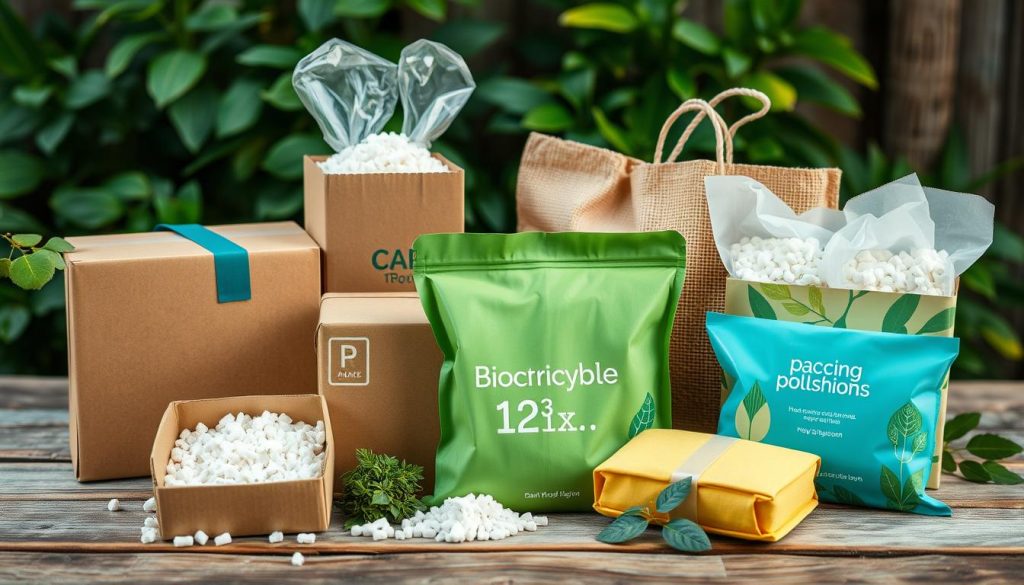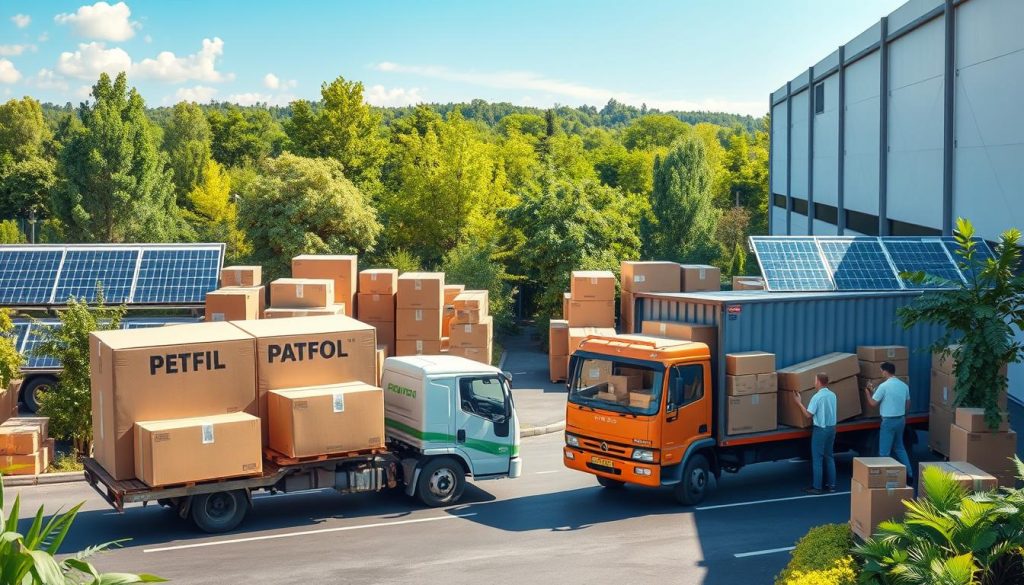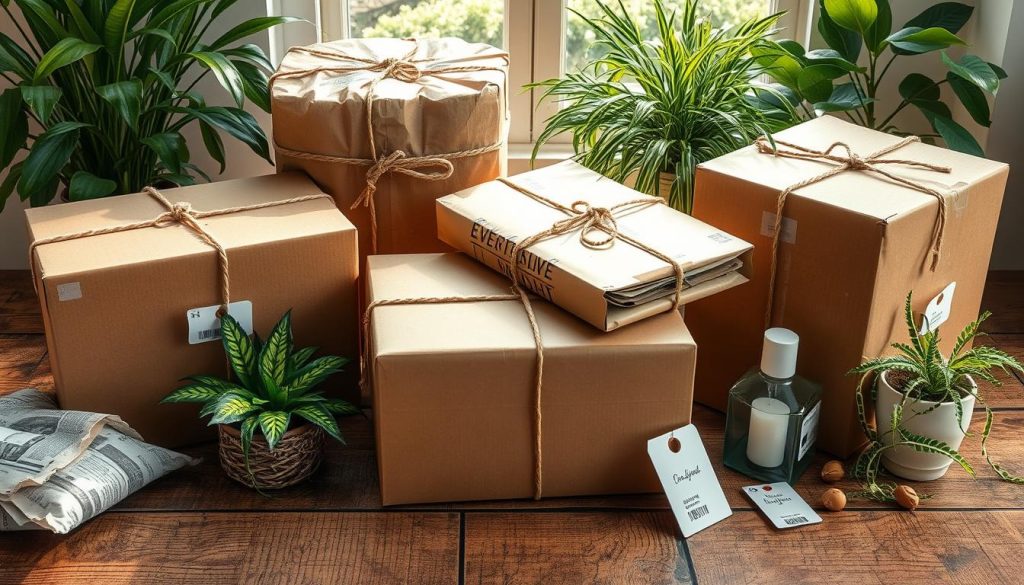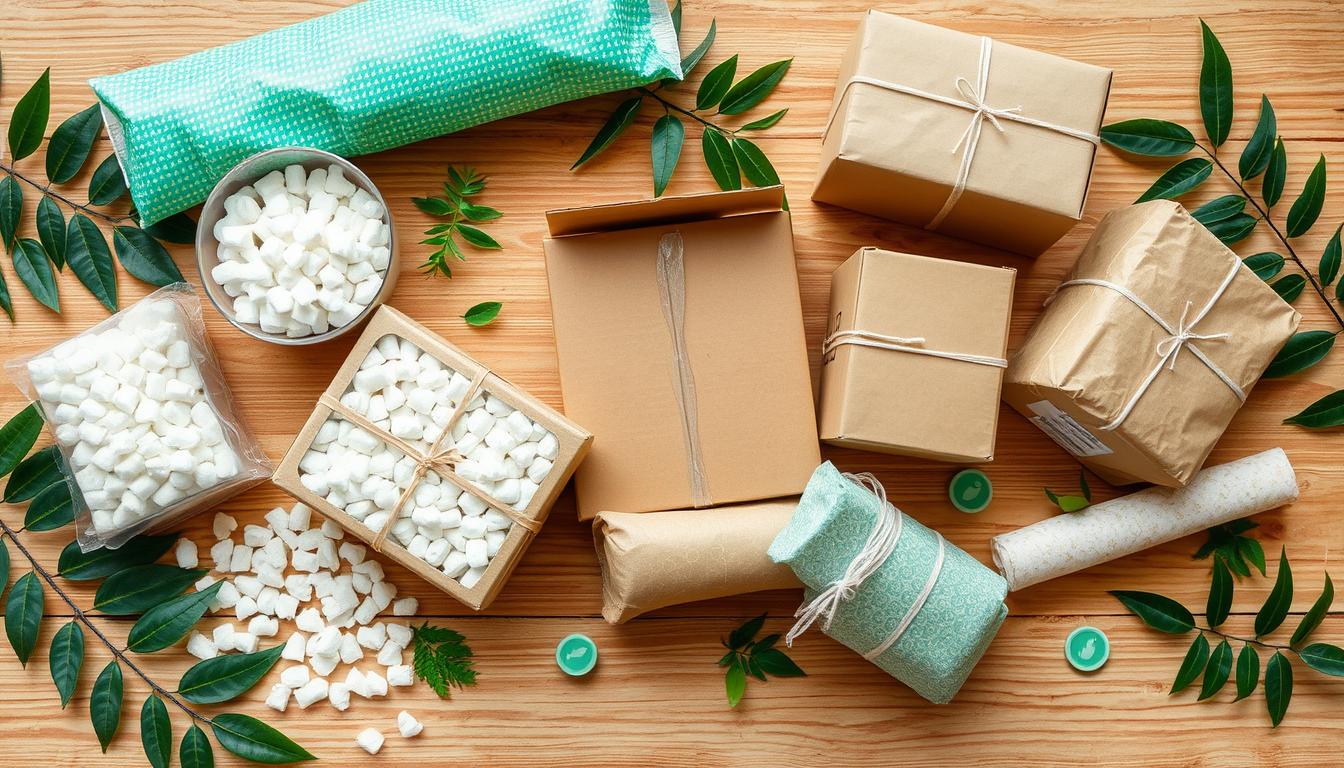As an entrepreneur, I’ve made eco-friendly shipping a top priority. Today, being green is more important than ever. By using eco-friendly materials, we can help our planet and reduce waste.
Switching to sustainable logistics is good for everyone. Eco-friendly materials save resources and meet customer demands for green products. This move has made my business more respected and loyal customers.
In this article, I’ll explore the benefits of eco-friendly shipping. I’ll talk about its impact on the environment and share my favorite green packing solutions. Plus, I’ll give tips on making your shipping process greener.
Why I Choose Eco-friendly Shipping Materials
As a business owner, I’m dedicated to reducing my environmental footprint. I’ve switched to eco-friendly shipping materials. I’m excited to share why I made this choice.
The Environmental Impact
Traditional shipping materials harm the environment. Plastic packing peanuts and non-recyclable boxes end up in landfills. They take centuries to break down, releasing harmful gases and polluting soil and water.
Biodegradable packaging and plastic-free shipping reduce waste. They support a sustainable future.
Sustainable Practices for Shipping
Choosing eco-friendly shipping benefits the planet and my business. Using recyclable materials cuts my carbon footprint. It helps create a circular economy.
Optimizing package sizes and encouraging recycling also helps. These actions reduce waste and promote environmental care.
My choice of biodegradable packaging and carbon-neutral delivery shows my commitment to the environment. It’s a small step toward a greener future. I’m proud to be part of this movement.
My Favorite Eco-friendly Shipping Materials

I’m passionate about sustainability, so I’ve looked into many eco-friendly shipping materials. I use biodegradable packing peanuts and recycled cardboard boxes. These choices protect my products and help the environment.
Biodegradable Packing Peanuts
Plastic packing peanuts take ages to break down, adding to plastic waste. But, biodegradable peanuts from corn starch or sugarcane are a better option. They naturally decompose, making them a greener choice for shipping.
Recycled Cardboard Boxes
I’ve switched to recycled cardboard boxes for my shipping needs. They’re strong and protect my items well. Plus, they help reduce waste by being recyclable.
Plant-based Cushioning
I’ve also started using plant-based cushioning. This includes molded fiber from recycled paper and foam from corn or sugarcane. It’s a great way to protect my products without using harmful materials.
Using these eco-friendly options helps me reduce my carbon footprint. It shows that we can have quality packaging without harming the environment. These choices are a step towards a more sustainable shipping industry.
How to Implement Eco-friendly Shipping in My Business

Switching to sustainable logistics and zero-waste packaging is key for a green supply chain. Eco-friendly shipping cuts down on environmental harm and attracts eco-conscious customers. Here’s a simple guide to start:
Assessing Current Packaging Solutions
Start by checking your current packaging. Look at the materials, waste, and shipping efficiency. This will show you where to improve and how to add sustainable logistics.
Sourcing Sustainable Materials
After reviewing your current methods, find eco-friendly shipping materials. Choose biodegradable, recycled, or plant-based options. Talk to suppliers to find the best fit for your business.
Training Staff on Green Practices
- Teach your team about sustainable logistics and zero-waste packaging.
- Train them on handling and disposing of eco-friendly materials.
- Encourage staff to share and apply new green shipping ideas.
Empowering your team to support green initiatives creates a sustainable culture. This ensures eco-friendly shipping is a success in your business.
The Cost of Eco-friendly Shipping Materials

Businesses often worry about the cost of eco-friendly shipping. Traditional shipping might seem cheaper at first. But, the long-term benefits of green alternatives are worth the investment.
Comparing Prices with Traditional Materials
Eco-friendly shipping materials, like biodegradable peanuts or recycled boxes, might cost a bit more. But, the difference is often smaller than expected. This is because more companies are making sustainable options affordable, thanks to growing demand.
Long-term Savings with Sustainable Choices
The true value of eco-friendly shipping is in the long-term savings. Using green delivery and reducing waste helps the environment. It also makes your brand more appealing to eco-aware customers.
This can boost your brand’s image and give you a competitive edge. Plus, green packaging can cut down on shipping costs. It’s a smart choice for businesses aiming to be more sustainable.
Tips for a Greener Shipping Process
As a business, we’re all about being green. We focus on cutting down packaging waste, getting customers to recycle, and keeping up with new eco-friendly ideas. This helps us make a big difference for our planet.
Reducing Packaging Waste
One key way to be greener is to use less packaging. We’ve started using materials like plant-based cushioning and recycled cardboard. This cuts down on waste a lot. We’ve also made our packages smaller, so they only use what’s needed to keep things safe while they’re shipped.
Encouraging Customers to Recycle
Getting our customers to recycle is also important. We put clear recycling instructions on our packaging. This has really helped more people recycle, making our shipping process better for the environment.
Staying Informed on New Eco-friendly Innovations
The field of sustainable packaging is always changing. I keep up with the latest by researching trends, going to conferences, and talking to experts. This helps us use the best green shipping methods and keep improving our impact on the planet.

